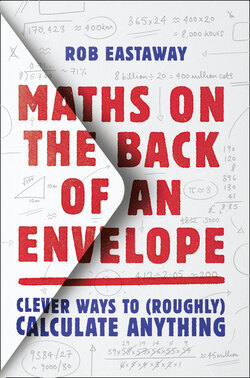Читать книгу Maths on the Back of an Envelope - Rob Eastaway - Страница 16
MAD COWS AND MAD FORECASTS
ОглавлениеIn 1995, Stephen Churchill, a 19-year-old from Wiltshire, became the first person to die from Variant Creutzfeldt–Jakob disease (or vCJD). This horrific illness, a rapidly progressing degeneration of the brain, was related to BSE, more commonly known as ‘Mad Cow Disease’, and caused by eating contaminated beef.
As more victims of vCJD emerged over the following months, health scientists began to make forecasts about how big this epidemic would become. At a minimum, they reckoned there would be at least 100 victims. But, at worst, they predicted as many as 500,000 might die – a number of truly nightmare proportions. 8
Nearly 25 years on, we are now able to see how the forecasters did. The good news is that their prediction was right – the number of victims was indeed between 100 and 500,000. But this is hardly surprising, given how far apart the goalposts were.
The actual number believed to have died from vCJD is about 250, towards the very bottom end of the forecasts, and about 2,000 times smaller than the upper bound of the prediction.
But why was the predicted range so massive? The reason is that, when the disease was first identified, scientists could make a reasonable guess as to how many people might have eaten contaminated burgers, but they had no idea what proportion of the public was vulnerable to the damaged proteins (known as prions). Nor did they know how long the incubation period was. The worst-case scenario was that the disease would ultimately affect everyone exposed to it – and that we hadn’t seen the full effect because it might be 10 years before the first symptoms appeared. The reality turned out to be that most people were resistant, even if they were carrying the damaged prion.
It’s an interesting case study in how statistical forecasts are only as good as their weakest input. You might know certain details precisely (such as the number of cows diagnosed with BSE), but if the rate of infection could be anywhere between 0.01% and 100%, your predictions will be no more accurate than that factor of 10,000.
At least nobody (that I’m aware of) attempted to predict a number of victims to more than one significant figure. Even a prediction of ‘370,000’ would have implied a degree of accuracy that was wholly unjustified by the data.
